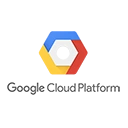Welcome to the Beginner's Guide to Google Cloud! This guide will help you kickstart your journey into the world of cloud computing with Google Cloud Platform (GCP).
1. Sign Up for Google Cloud
Before you can start using Google Cloud services, you need to sign up for an account. Visit the Google Cloud website and follow the steps to create your account.
2. Set Up Google Cloud SDK
The Google Cloud SDK is a set of tools for managing resources and interacting with GCP services. Install it on your local machine by following the instructions in the Google Cloud SDK documentation.
3. Create Your First Project
Once your account is set up, create your first project using the Google Cloud Console. Projects are used to organize and manage resources.
gcloud projects create YOUR_PROJECT_NAME
gcloud config set project YOUR_PROJECT_NAME
4. Explore GCP Services
Google Cloud offers a wide range of services, including Compute Engine, Cloud Storage, BigQuery, and more. Explore the Google Cloud products and choose the ones that best suit your needs.
5. Sample Code
Let's write a simple code snippet to interact with Google Cloud Storage using Python and the Google Cloud Storage client library.
# Import the Google Cloud Storage client library
from google.cloud import storage
# Set up the client
client = storage.Client()
# Specify the name of the bucket and the object
bucket_name = 'your_bucket_name'
object_name = 'your_object_name'
# Get the bucket
bucket = client.get_bucket(bucket_name)
# Create a blob object
blob = bucket.blob(object_name)
# Upload a file to the bucket
blob.upload_from_filename('path/to/your/file.txt')
print(f'File {object_name} uploaded to {bucket_name}.')
Conclusion
Congratulations! You've taken the first steps into the exciting world of Google Cloud. This guide provides a basic overview, and there's much more to explore. Dive into the documentation and start building your own applications on Google Cloud Platform!

